“The key is to set realistic customer expectations, and then not to just meet them, but to exceed them – preferably in unexpected and helpful ways.”
– Sir Richard Branson
Everybody says that experience is the greatest educator. In the future, I want to create businesses. Thus, I decided that I might as well see how much I could learn by challenging myself to create a business in 30-days. If you’ve ever thought about doing this, and hope to live vicariously through me, you can follow my journey here and check my socials where I post regular updates.
What
Have you heard the term “customer persona?” If not, then you’re missing out.
A customer persona, also known as a buyer persona, represents the key traits of a large segment of your target market. When you sell something, you will undoubtedly have a certain “type” of person that gravitates toward the product, service, or offer.
One of the most common mistakes in business is thinking that your product is for everyone. It’s not. Don’t fall into that trap. No product is for everyone. True, everyone could potentially buy your product, but realistically, they won’t. If you’re trying to sell to everyone, then you’re effectively going to sell to no one.
Marketing is like speaking to an audience. If you’re a presenter, and your audience is children, you will speak to them in a way that they will resonate with. If, on the other hand, you’re speaking to a group of business executives, your approach has to be different. The execs won’t resonate with the same tone, the same content, the same delivery, nor the same features that you might have sold the children with.
Building a customer persona is just about getting clear on who your product is for which helps you to clarify your brand message, your tone, your packaging, your media, your outreach methods, and your overall brand delivery.
It must be noted that you can have multiple buyer personas. When that’s the case, you will build out multiple, and try to find the overlap. If very little overlap exists between the two, then the way you will market to these two different “types” will be different.
It’s not very difficult to run two different Facebook ads for the same product.
When
You want to build out a customer persona anytime you’re trying to get clear on the business’ delivery. It’s one thing to understand the mission and value behind a business (You can read more about that in my posts on building a business plan), it’s another to communicate and package that value.
Communicating and packaging is the most important part.
True, if you haven’t clarified your mission and vision (link to business plan), you won’t have anything to communicate, but I would argue that it’s easier to clarify your mission than it is to communicate it effectively. In fact, I think one of the biggest problems companies face is not understanding how to communicate the value they offer to their target customer.
Have you seen those YouTube dropshipping videos? Some of those products are strange and in my opinion a complete waste. Yet, they showcase that it’s not the actual value of a thing, rather the perceived value of a thing that gets a customer to buy something.
Businesses don’t fail because of the idea. Businesses fail because of the execution. Sometimes it’s the tools and building constraints, sometimes it’s marketing constraints, sometimes it’s selling constraints. Usually, though, the idea alone is not the cause of a failed business, and that is because every product has a market.
Too many people get stuck asking the question “do I have a market?” Instead, your impulse should be twofold: first, “do I have a big enough market to make the trouble of building this product or business worth it,” and second, “can I communicate the value of my product effectively to my target market?”
You build user personas when you’re trying to decide the answers to those two fundamental questions.
Once you’ve clarified the internal mission, objectives, and vision of your business, (something easily done in a business plan) you move onto the viability of your business by asking who would buy it. Your business will begin and end with people. Take that to heart.
Why
The more you understand your target, the better you will be able to communicate to them, and the better you can communicate to them, the more you can sell them. Business is an exchange of value. Businesses aren’t trying to sell people that don’t want the product. That’s a waste of time, and any good business person does not want to waste his/her time. Time is valuable. Instead, they want precision. Businesses are looking for the people that are suffering from some problem, whose lives would be enhanced by the value provided by that product/service/offering.
It’s like a real-life matching game. You just need to match the product to the person.
The best way to do this is to understand your customer and to understand your product. The more you understand about each, the more you will know who to match with what, and why that works.
Your goal as a business is to know your customer so well that you give them and create the things that they want.
Honestly, many businesses get away with not understanding their customer…but it wastes time and money.
The real benefit to building out your customer/buyer persona is to save yourself time and energy. You’ll know where to look, what to say, how to package your value, how to innovate, and how to remain consistent as a brand.
How
Now, to the good stuff. How to build out this customer/buyer persona.
First, take a look at these charts to get an overview.
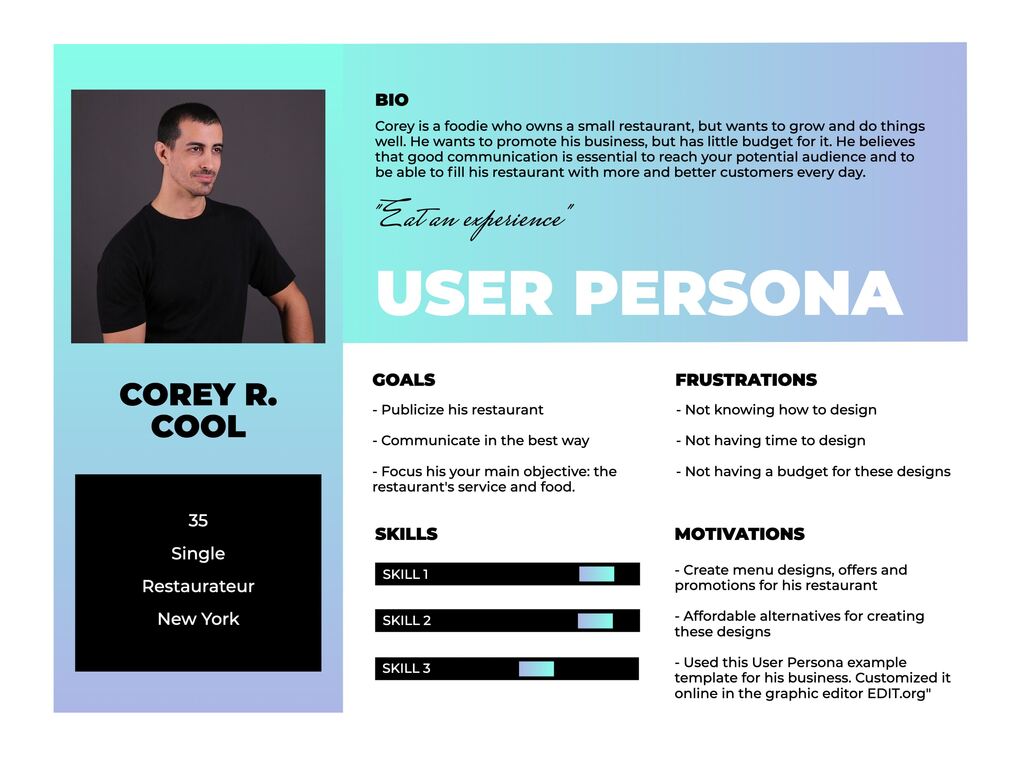
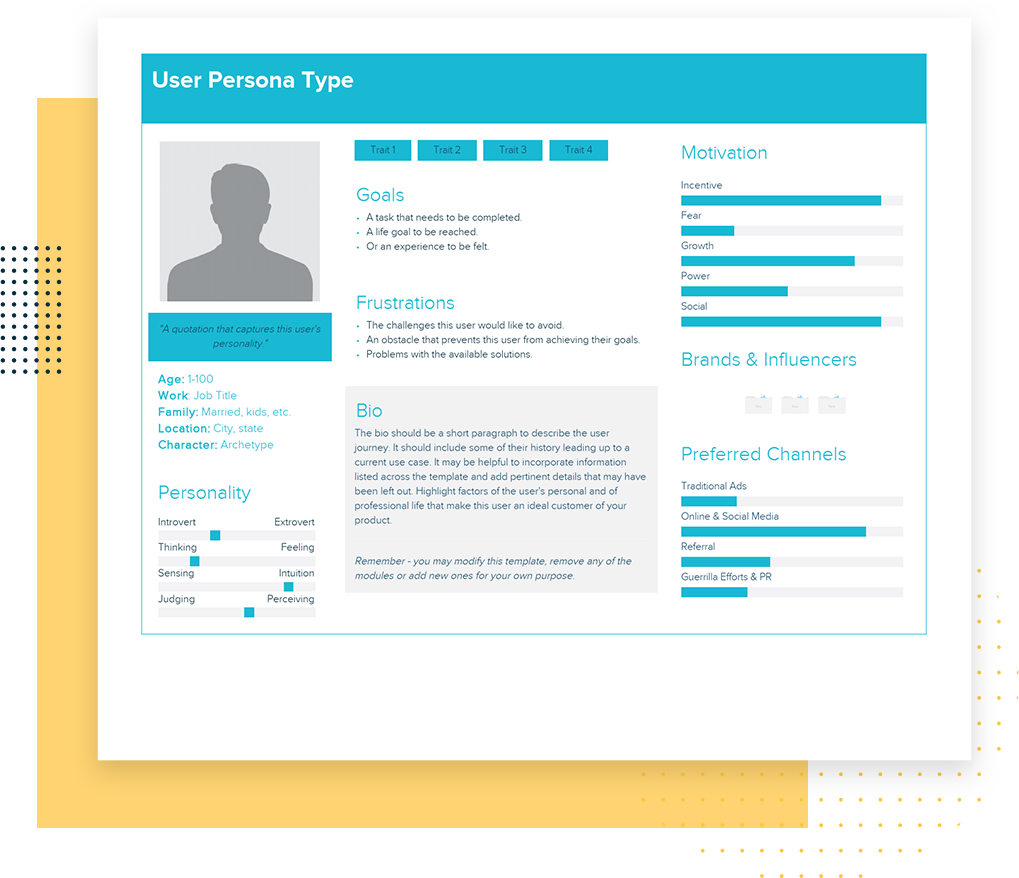
If you’re wondering where to get the information, here are some recommendations:
- Look through your different databases for relevant already captured data and stats
- Media
- Observation
- Who’s following you
- How many followers
- How much engagement
- Analytics Tools
- FB Audience Insights
- Observation
- Traction
- Who is already buying/engaging
- What gets the most engagement
- Website Analytics
- You can use website analytic tools like Spyfu, SEMRush, or Google Analytics to analyze traffic to a website.
- Your Compiled Data if you’re an established business
- Your competitors’ information
- Customer Interviews
- Media
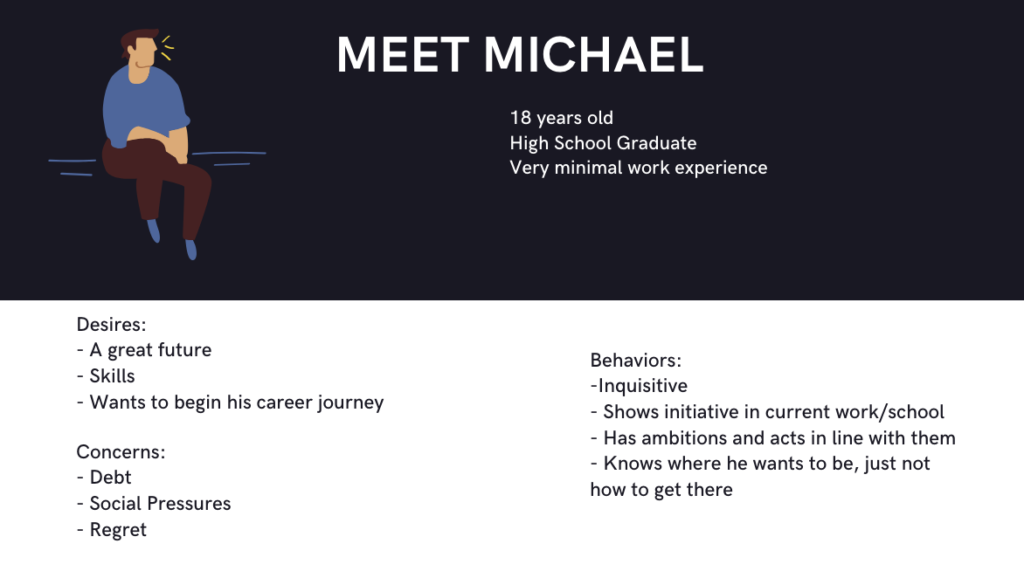
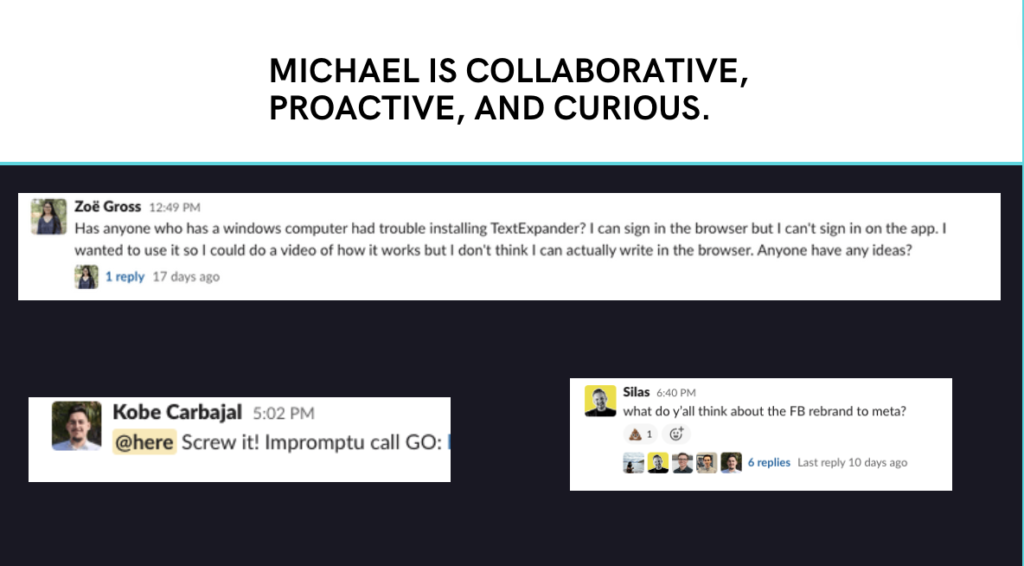
You want information that gives you insight into:
- Demographic Information
- Age
- Sex
- Location
- Occupation
- Income
- Status
- Education
- Hobbies
- Interests
- Engagement Information
- Customer Goals
- Desires
- Values
- Pain Points
- Challenges
- Annoyances
- Frustrations
- Differentiators/Identifiers
- Personality
- Quote
- How they find us/where to find them
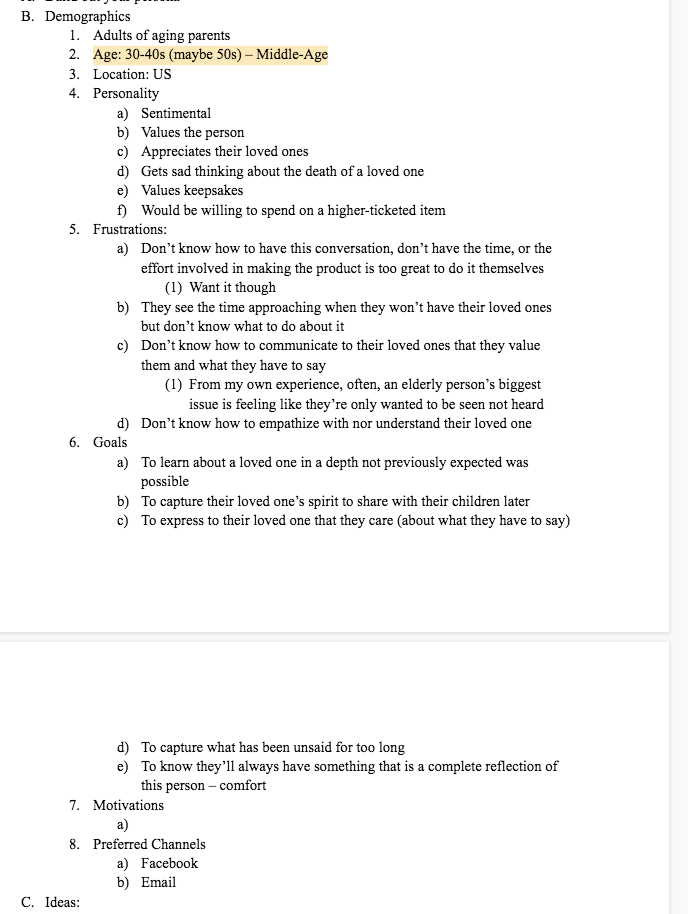
You can fill a chart, write a doc, or compile the information in any other way you desire. The goal is to compile in a way that makes creating action steps easier.
You’re going to take the compiled information, compare it to your business plan, and infuse it into your execution strategy. You want your brand to naturally speak to the people that are going to be engaging with it. Use this information and level up your customer attraction and retention strategies.
Now that you know who you’re trying to reach, a great next step is to build a content schedule for your media platforms.
